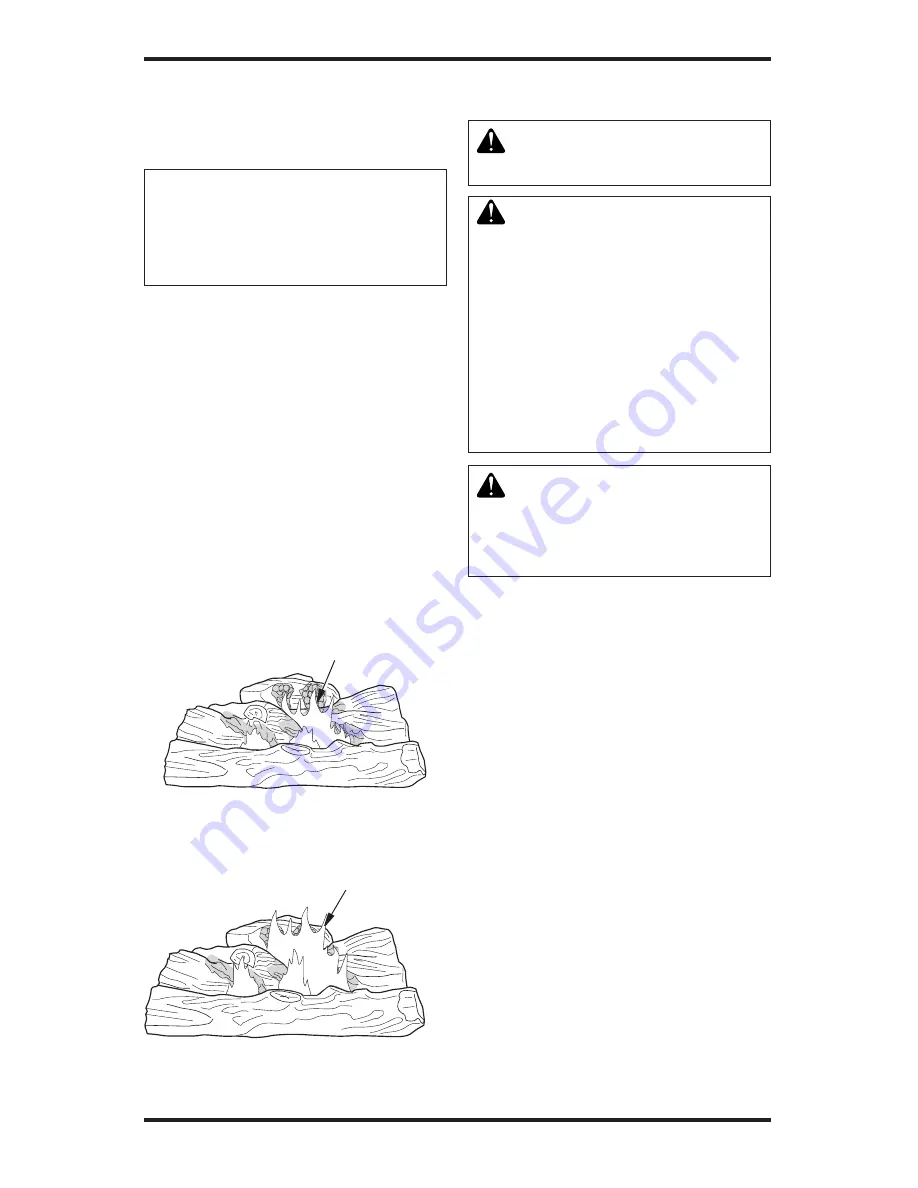
www.desatech.com
114745-01D
0
INSPECTING bURNERS
Continued
BURNER FLAME PATTERN
Figure 24 shows correct burner flame pattern.
NOTICE: Do not mistake orange
flames with yellow tipping. Dirt
or other fine particles are burned
by heater, causing brief patches
of orange flame.
If burner flame pattern is incorrect, as shown in
Figure 25
• turn heater off (see
To Turn Off Gas to Appli-
ance
, page 17)
• see
Troubleshooting
, page 22
The flames from the burner travel horizontally
through the log set and emerge at the middle and
rear of the set against the back logs.
The flames are blue off the burner and as they
progress through the log set, change to a light
yellow color, yellow decorative flames are visible
as the flames exit the log set.
The base of the log set and the underside of the
top logs glow red. Natural gas models will burn
with more blue flame, while propane gas model
will burn with bright yellow flame.
Figure 24 - Correct Burner Flame Pattern
Figure 25 - Incorrect Burner Flame
Pattern
Blue and Bright
Yellow flames
Darker
Orange
Flames
CLEANING AND
MAINTENANCE
WARNING: Turn off heater
and let cool before cleaning.
CAUTION: You must keep
control areas, burners and
circulating air passageways
of heater clean. Inspect these
areas of heater before each use.
Have heater inspected yearly
by a qualified service person.
Heater may need more frequent
cleaning due to excessive lint
from carpeting, pet hair, bedding
material, etc.
WARNING: Failure to keep
the primary air openings of the
burner clean may result in soot-
ing and property damage.
BURNER INjECTOR HOLDER AND
PILOT AIR INLET HOLE
The primary air inlet openings allow the proper
amount of air to mix with the gas. This provides
a clean burning flame. Keep these holes clear of
dust, dirt, lint and pet hair. Clean these air inlet
openings prior to each heating season. Blocked
air openings will create soot. We recommend
that you clean the unit every three months during
operation and have heater inspected yearly by a
qualified service person.
We also recommend that you keep the burner
tube and pilot assembly clean and free of dust and
dirt. To clean these parts we recommend using
compressed air no greater than 30 PSI. Your local
computer store, hardware store or home center
may carry compressed air in a can. You can use a
vacuum cleaner in the blow position. If using com
-
pressed air in a can, please follow the directions on
the can. If you don't follow directions on the can,
you could damage the pilot assembly.













































